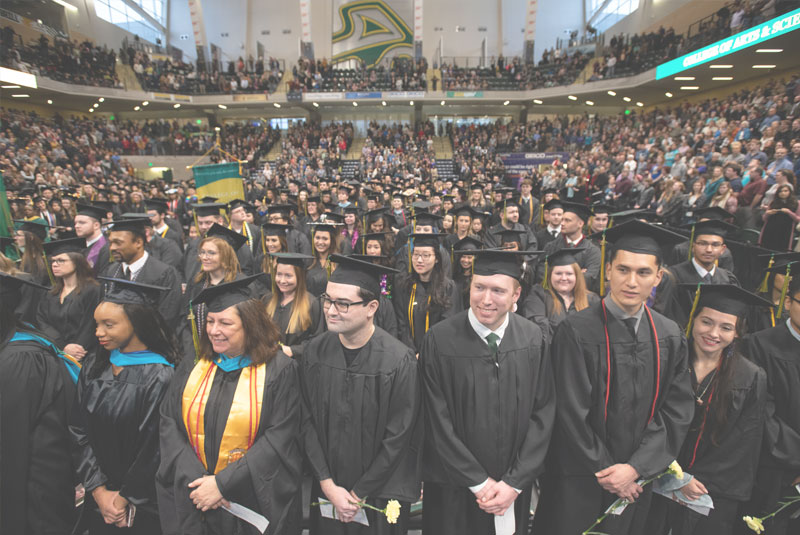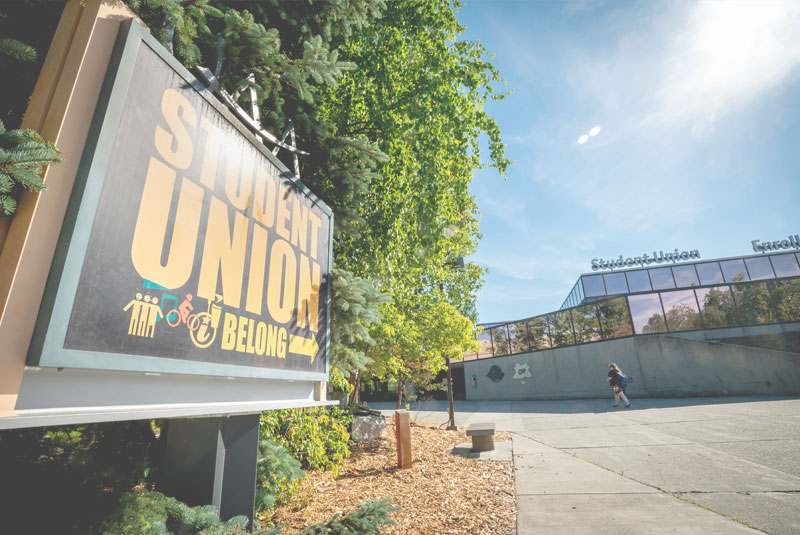Background
This REU SITE aims to provide science and engineering undergraduate students with
opportunities to participate in unique research available most likely only in Alaska.
The University of Alaska Anchorage (UAA) is the largest university in Alaska, with
roughly 15,000 students from all over the US and about 90 countries. UAA is in the
heart of Alaska’s largest city, Anchorage, where culture, innovation, and adventure
converge. Faculty at UAA conduct research in specialized fields, including environmental and
natural science, cold climate engineering, biological field research to environmental
chemistry.
About the REU SITE Program at UAA
This REU SITE aims to provide science and engineering undergraduate students with opportunities
to participate in unique research available most likely only in Alaska, the approaches
and results of which can be transferred to other regions. Students will have the opportunity
to actively participate in scientific research projects specific to cold regions.
The three types of research activities are: 1) laboratory work, data collection and
analysis; 2) fieldwork, sampling, and data collection; and 3) modeling.
Eligibility
In order to be considered you must be:
- A U.S. citizen or permanent resident of the United States.
- Enrolled in a degree program (part-time or full-time) leading to a baccalaureate or
associate degree.
- Students who are transferring from one college or university to another and are enrolled
at neither institution during the intervening summer may participate.
- Students who have received their bachelor’s degrees and are no longer enrolled as
undergraduates are NOT eligible to participate.
- No prior research experience is required.
Application Process Summary
To Apply you will need:
- Names and contact (email) addresses of 2 references who will be willing to write
letters of RECOMMENDATION
- Resume or CV
- Completed Application Form (with questions answered)
- Unofficial Transcripts
RECOMMENDATION: Provide names and contanct information of 2 faculty members or supervisors at your
home institution. We will contact them ot obtain letters of recommendation on your
behalf. It is advised that you inform them about your application to the REU SITE
Program.
TRANSCRIPTS: Upload your unofficial copies of your college transcripts to the online application
portal. Upon acceptance to the program, students must provide official transcripts.
Program Dates
Application Deadline: March 15 2025.
The 2025 program period is May 27 through August 1, 2025. Students will need to arrive
in Anchorage no later than May 26, 2025 and not plan to depart earlier than August
2, 2025.
Following the program period, we will maintain contact with you and will continue
to encourage successful students to pursue additional training and opportunities in
the cold climate engineering and science. Please plan to keep the REU Program PI (Dr.
Getu Hailu) informed of your latest mailing address as well as your current e-mail
address.
Financial Support
Students accepted to the REU program will receive the following financial support:
- Travel cost support (upto $930).
- Stipend of $650/wk (with the final paycheck dispersed upon receipt of the final research
paper).
- University of Alaska Anchorage dormitory housing.
- Food allowance $175/wk
- $350 is provided to support each student’s research project and is paid to vendors
on requests from mentors.
Selection Process
The PI, in collaboration with the faculty mentors, will review applications. Project
assignments will consider the preferences of the mentor and the student. Early in
April, accepted students will get notification. By April 7th, students must choose
whether to accept or reject REU offers.
For more information contact Dr. Getu Hailu at ghailu@alaska.edu.

This opportunity is funded by the National Science Foundation Grant #2349068.
- Investigating seismic hazards resulting from permafrost thaw in Alaska's Arctic regions.
Mentor: Dr. Utpal Dutta
-
Geomicrobiology of extreme environments. Mentor: Dr. Brandon Briggs.
-
Solid particle erosion (SPE) of additively manufactured (AM) ceramic materials for
space mission applications. Mentor: Dr. Getu Hailu.
-
Performance monitoring and evaluation of heat pumps in cold regions. Mentor: Dr. Getu
Hailu.
-
Photochemical pathways and photoproducts of current and emerging sub-Arctic aquatic
contaminants. Mentor: Dr. Patrick Tomco.
Brief descriptions of these projects are given below.
Project 1: Investigating seismic hazards resulting from permafrost thaw in Alaska's Arctic regions;
Mentor: Dr. Utpal Dutta
The rapid thawing of permafrost in Alaska’s high-latitude landscapes, driven by climate
change, has become a critical issue, threatening regional infrastructure stability.
The rate of permafrost degradation is outpacing earlier predictions, underscoring
the urgent need to understand its impacts. Identifying the thaw-unstable permafrost
zones and selecting the most appropriate, cost-effective foundation types are two
critical tasks to ensure the long-term durability of buildings and infrastructure
while minimizing life-cycle costs in permafrost regions.
This project tackles this vital knowledge gap by conducting various geophysical (electrical
resistivity, seismic, gravity) and geotechnical investigations at some critical sites
in Alaska. A particular focus will be placed on testing the effectiveness of gravity
data acquisition using a next-generation high-sensitivity micro-gravimeter to detect
ice-rich permafrost and ground ice. Through detailed 3D mapping of soil density and
volumetric ice content, this research aims to detect thaw-unstable conditions, ultimately
bolstering the resilience of Arctic infrastructure and laying the groundwork for future
studies on infrastructure adaptation in permafrost-affected regions.
The field surveys will serve as an educational platform, with undergraduate students
receiving hands-on training in cutting-edge equipment, field protocols, safety procedures,
and data collection techniques. Following the fieldwork, the students, principal investigators,
and project team will process and interpret the data using advanced methods. This
collaborative effort will provide critical insights into the extent of permafrost
thawing and its far-reaching implications for infrastructure stability in the Arctic.
Project 2: Geomicrobiology of extreme environments; Mentor: Dr. Brandon Briggs.
Extreme environments host a variety of unique microbial life that is adapted to the
harsh environmental conditions. Studying the life in these extreme environments provides
foundational understanding of the extremes that life can withstand and provides clues
to the search for extraterrestrial life on many exoplanets and moons. Furthermore,
these microbes have an enormous potential for biotechnological applications that can
be used in anything from food processing to sustainable mining. Very few of these
microbes are
currently known and characterized. This research project looks to sample environmental
analogs for places like the polar ice caps of Mars or icy moons such as Europa, Enceladus,
and Titan by analyzing the
glacial outflow and sediment from Alaskan glaciers. Glaciers represent a unique environment
here on Earth that can offer a snapshot of microbial communities preserved under slowly
changing conditions. Similarly, environments covered by ice on exoplanets or moons
will protect potential communities from surface conditions, and as such, studying
glacial communities here on Earth provides an exciting analog for non-
terrestrial locations. These microbes have also evolved under extreme nutrient conditions
and have adapted ways to obtain their nutrients from the surrounding rocks. Summer
field and research expeditions, called Microbe Hunts, will provide an opportunity
to obtain novel microbes from extreme environments in Alaska. Each Microbe Hunt will
consist of lectures, field excursions, and laboratory exercises during the summer.
Students will learn field and laboratory safety, methodologies in microbiology, chemistry,
and the scientific method. Sessions will be devoted to interdisciplinary training
across microbiology, geology, and chemistry. Students will learn field and laboratory
safety, scientific methodologies in microbiology and chemistry.
Sessions will be devoted to interdisciplinary training across microbiology, geology,
and chemistry. Students will develop and characterize (using both molecular and traditional
methods) either microbial isolates or enrichment cultures; will assist in determining
microbial metabolic diversity through cultivation experiments. These microbes can
then be screened for biotechnological potential.
Project 3: Solid particle erosion (SPE) of additively manufactured (AM) ceramic materials
for space mission applications; Mentor: Dr. Getu Hailu.
One of the wear processes through which the integrity of a component can be compromised
is by erosive wear, which is a dynamic process in which material is removed from a
target surface because of mechanical interaction between impinging particles and the
target surface. Discrete particles impacting a target surface at a high speed result
in material loss and mechanical degradation, potentially causing component damage
and even mission failure. The objectives of this project are: 1) to study erosive
wear of additively manufactured components experimentally and 2) to develop predictive
erosive wear models. The goal is to advance our understanding of the response of AM
manufactured ceramic parts for space mission applications to erosive wear. The project's
outcome is the generation of essential data that will be used to improve the AM process
and the development of predictive erosive wear models that will be used to assess
the erosive wear performance of AM fabricated ceramic components.
Students participating in this project will (a) characterize particle properties such
as shape, size, and distribution; determine particle spatial and velocity distributions;
(b) help conduct SPE experiments at different impact angles; (c) analyze erosive wear
data.
Project 4: Performance monitoring and evaluation of heat pumps in cold regions
Space heating of residential units in the Railbelt and Southeast regions of Alaska
comprises about 80% of the total energy consumption in those areas. Natural gas is
the primary fuel for residential home heating in 64% of the households in these regions
(WHPacific, 2012). Heat pumps are among the cleanest energy-efficient technologies
identified by the DOE as innovative technologies for space heating and cooling, that
could substantially contribute to the goal of reducing fossil fuel use (Goetzler et
al., 2014). Among heat pumps, air-source heat pumps offer a lower initial cost than
ground-source heat pumps (40% reduction in installation cost compared to ground-source
heat pumps) (Safa et al., 2015). However, the performance of an air source heat pump
decreases in colder outdoor temperatures, and the extent to which the heat pump performance
declines in cold regions needs to be understood to improve their performance. The
primary objective of this project is to understand the energy tradeoffs between a
heat pump and any other heating devices (such as backup resistance heaters) used in
a residential house in cold region homes. This evaluation is performed as part of
a whole-house monitoring effort. Once the essential characteristics of the residential
house are evaluated (i.e., the heating load is determined for the entire heating season,
considering building envelope characteristics and the local weather), the heating
energy offset by the heat pump is of particular interest. Year-long measurements are
made and recorded using extensive sensor network and data is recorded using data loggers.
Students participating in this project, under the guidance of the PI, will perform
extensive data collection and analyses on (a) outdoor temperature and humidity, (b)
indoor temperature and humidity, (c) airflow through the air handling unit - AHU (conditioned
air delivered to the house), (c) power consumed by the outdoor unit (compressors,
fan, controls), by the AHU fan, and by the electric heater, (d) system status (defrosting),
and perform performance evaluation.
Project 5: Photochemical pathways and photoproducts of current and emerging sub-Arctic
aquatic contaminants; Mentor: Dr. Patrick Tomco.
This project investigates the aquatic photochemical pathways by which emerging contaminants
in the sub-Arctic are degraded and the extent to which high-latitude environmental
factors impact persistence. Sub-Arctic environmental conditions have a unique timeline
of contaminant attenuation compared to temperate conditions and a unique relative
contribution of direct and indirect processes. This project assesses explicitly three
priority compounds: 12α-hydroxy-rotenone, 6-PPD quinone, and fluoridone. These have
recently been detected persistently in Alaskan waterways, but no information exists
regarding photochemical pathways and photo-transformation products in natural waters.
In this project, students will help determine individual contributions of dissolved
organic matter, hydroxyl radicals, singlet oxygen, and triplet excitation states.
The temperature dependence of each process will be compared at 4, 12, and 20 °C, which
spans the typical range of surface water temperatures. Photoproducts resulting from
each process will be profiled using high-resolution mass spectrometry combined with
non-targeted analytical approaches. This information will provide a better fundamental
understanding of the environmental drivers for these photochemical processes.

This opportunity is funded by the National Science Foundation Grant #2349068.















